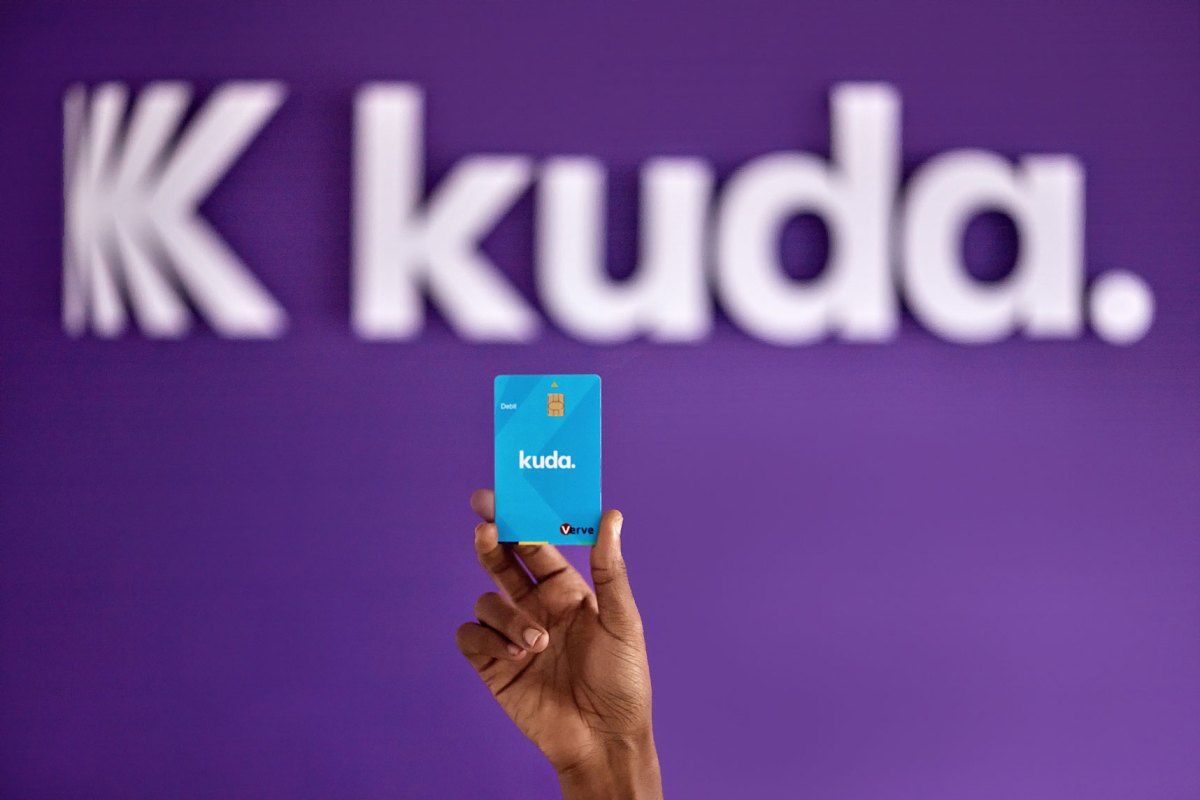
Earlier this month, Kuda co-founder and CEO Babs Ogundeyi told customers that the Nigerian on-line challenger financial institution had reached nearly N₦56 trillion (~$60 billion) in transaction worth since its 2019 launch.
Ogundeyi additionally mentioned that Kuda had achieved a notable milestone, with 7 million retail and enterprise prospects as of right this moment. Nonetheless, the determine falls sizeably wanting the fintech’s projections when it noticed contemporary funding final yr.
In February 2023, Kuda introduced its buyers with a pitch for brand spanking new money injection. At the moment, it claimed 5 million customers and predicted this determine would double by the tip of 2023, as per an investor pitch deck seen by TechCrunch. Kuda finally raised an estimated $20 million in the course of 2023, in keeping with folks with information of the fundraising efforts — nonetheless the bridge spherical closed at the same $500 million valuation it achieved in 2021 when it raised a $55 million Collection B spherical.
Amid the 2021 venture capital boom, Kuda had truly secured one among Africa’s largest Collection B rounds, off the again of development that had seen the corporate present banking companies to 1.4 million customers in Nigeria — with plans to launch into extra nations throughout the continent and past.
5-fold development
Greater than two years later, Kuda has but to realize a foothold in some other African nation — it’s nonetheless awaiting license approvals to function in Ghana, Uganda, and Tanzania. Nonetheless, it has managed to develop its person base five-fold since 2021 by servicing Nigerians each at house and overseas, having expanded to the U.K. in late 2022.
This stage of development has include its personal challenges, provided that decrease charges and simpler account entry are the first attraction for purchasers. For years, U.Okay. neobanks such as Monzo, Revolut and Starling have run on sticky platforms that run with all the massive losses related to serving rising buyer bases. And now that they’re reaching profitability — primarily as a result of their lending merchandise — they’ve solely managed to take action after elevating billions of {dollars} in capital. Monzo, as an example, reached profitability for the first time in the course of the first two months of 2023, nevertheless it has recorded growing net losses from £20 million in 2017 to £116 million final yr.
Kuda’s reported losses, per a TechCabal report, rose from $2 million in 2020 to $14 million in 2021, aligning with the sample seen within the world neobank sector. Most of Kuda’s spending in 2021 was allotted to operational bills, protecting model consciousness, advertising, and expertise acquisition. However not like world neobanks, Kuda additionally haemorrhaged cash by way of an ill-thought-out lending product whose non-performing mortgage (NPL) ratio of 69% considerably exceeded the business common of lower than 5% for a similar yr, the report mentioned.
In response, Kuda has needed to make strategic changes. First, the fintech decreased its advertising spending in June 2022, per its communication to buyers, and it added 1.5 million customers within the following 9 months. Kuda has additionally restructured its overdraft product and, as talked about by Ogundeyi in his latest message, “lined up new credit score options together with loans for wage earners and an improved model of Kuda Overdraft.”
Equally, to spice up its transaction volumes and revenues, Kuda lately launched a POS terminal to enterprise prospects, putting it within the extremely aggressive and capital-intensive company banking market.
Presently, Kuda’s main revenues are generated by way of charges and commissions charged when its prospects make airtime purchases, invoice funds, and funding revenue from fastened deposits. The corporate concluded 2022 with almost $20 million in annualized revenues, recording $100 million in month-to-month deposits.
Outlook for Kuda and African growth-stage ventures
At a $500 million valuation, Kuda’s income a number of in 2022 was 25x. The fintech forecasted $40 million in income for 2023, presenting a 12.5x a number of. TechCrunch reached out to Kuda to verify if its income goal and different projections had been met, however the fintech declined to reveal, stating that “being a regulated entity, we aren’t permitted to share these numbers till an audit has been completed and approval given by the regulator.”
The emphasis on startups, particularly these in development levels, rising into their valuations has change into extra pronounced, notably amid the present enterprise capital slowdown. Assembly income targets turns into important for these startups as they search further capital in follow-on funding rounds. Failure to take action can affect their skill to safe valuations at their phrases, resulting in flat- and down-rounds.
For Kuda, it might want about $100 million in yearly income to make a 5x a number of (present funding phrases for public growth-stage fintech as of late) work at its present valuation. Not solely would it not take Kuda a pair extra years to realize this, however like many African growth-stage startups whose fundraising in the course of the enterprise capital growth pushed valuations to extra ranges in comparison with present pricing, it can face main obstacles reaching this. That is partly as a result of exterior elements and financial headwinds out of its management, reminiscent of foreign money devaluations and inflation.
In any case, though African VC-backed startups earn revenues in native currencies, they report revenues in {dollars} as a result of their fundraising from Worldwide enterprise capitalists. Over the previous 18 months, currencies just like the Nigerian Naira, which makes up most of Kuda’s revenues, have skilled greater than a 40% depreciation towards the greenback. This foreign money devaluation can affect monetary reporting, and African firms could have to double their income in native foreign money to report the identical quantity in {dollars}.
Forex devaluation additionally impacts shoppers’ spending and buying energy, making it more difficult for these firms to extend revenues in native markets. In 2022, Kuda’s common income per person (ARPU) began at $1.92 and ended at $1.67 (as compared, Monzo, with the identical variety of customers, all within the U.Okay., recorded $£112 within the month of February 2023, a 70% year-over-year enhance.)
On the flip facet, there’s the steep value of buying these customers. In Q1 2021, Kuda’s implied buyer acquisition value (CAC) ranged between $4 to $5 based mostly on advertising spending and the variety of customers inside that interval, which was 2-3x its ARPU. How a lot the fintech spent on advertising over the earlier two years is unclear, but reaching a $3 ARPU goal by the tip of 2023 as the corporate had communicated to buyers, would require substantial spending per buyer. This was at all times going to current a difficult situation for Kuda’s unit economics.
Turning into worthwhile is one among Kuda’s essential targets for the subsequent 5 years, however anticipating that of itself appears a tall order, contemplating that world digital banks serving prosperous prospects wanted 8-10 years to achieve profitability. The problem is compounded by the fintech’s simultaneous purpose of concentrating on world growth, aiming to serve 50 million customers throughout 4 continents and attain over $1 billion in revenues.
That mentioned, realizing these goals could hinge on a few elements, together with discovering a wedge, presumably by way of its revamped overdraft/microlending product, to enhance stickiness and income development — and its skill to safe further enterprise capital to scale.
Within the quick time period, although, Kuda faces the problem of demonstrating to buyers that its unit economics align with its development goals. Because the self-proclaimed “cash app for Africans,” Kuda should showcase {that a} VC-subsidized neobank can thrive on the continent as Brazil’s Nubank did in Latin America earlier than trying additional afield.
Trending Merchandise











